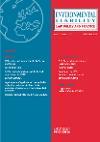Environmental Liability - Law, Policy and Practice - Volume 25 - Issue 5

Articles
CO2 capture and storage liability in Canada and Mexico
ALLAN INGELSON, Professor of Law & Executive Director, Canadian Institute of Resources Law, University of Calgary
Canada and Mexico have significant experience with petroleum development and both countries host depleted oil and gas reservoirs into which CO2 can be injected and stored to reduce their national greenhouse gas (GHG) emissions. Canada hosts the largest carbon capture and storage project in the world. In light of the commitments made by both governments under the Paris Agreement in 2015,1 Carbon capture and storage (CCS) has been deployed in Canada as part of its GHG emissions reduction strategy. There is potential tort and statutory liability for CO2 leaks from CCS projects and damage from induced earthquakes. In light of more experience in Canada with CCS projects, the Mexican government is consulting with Canadian experts to develop a legal framework to address potential liability issues associated with the proposed carbon capture and storage projects in Mexico
COP24, the Paris rulebook and diminished expectations for COP25
ALEXIOS ANTYPAS, Associate Professor, Department of Environmental Sciences and Policy, Central European University
The 24th Conference of the Parties to the UNFCCC, also meeting as the 1st Meeting of the Parties to the Paris Agreement (CMA 1), was the most significant COP since COP21 in Paris that produced the Paris Agreement. As expected, COP24 produced the ‘rulebook’ for the Paris Agreement, the rules and procedures to implement the Paris Agreement in the key areas of mitigation, adaptation, transparency, finance, stock takes, capacity building, loss and damage and other elements of the Agreement. The only area for which the COP could not finalize rules was for article 6 of the Agreement that addresses market based instruments. In short, the Paris Agreement will be put to work and COP24 will, by and large, be counted as a success in the history of these events. Yet the prospects for keeping human-caused climate change to within 2 degrees Celsius, much less the 1.5 degrees that the IPCC considers to be the upper bound of safe, seem perhaps more remote than ever.
Legal aspects of application of the method of estimating environmental flows in the protection of riparian ecosystems dependent on waters
MARCIN PCHALEK, Behave Eco and Irmina Grzegrzólka, Babel Tree
This article was prepared following an R&D project entitled ‘Adopting the method of establishing environmental flows’ conducted by the National Water Management Authority in Poland in 2015. The project was launched in connection with European debate on adopting normative regulations for securing ecological flows. Throughout this article the authors focus on the less frequently examined topic of overbank flows with the primary intention of referring to the requirements set out in international and European law on environmental and nature protection.
Case Commentaries
CJEU Waste ruling on returned consumer products
PAUL SHERIDAN, CMS London
Zero Carbon by 2050 Aspiration vs Achievement
DAVID POCKLINGTON
US Litigation and Regulation
ALLAN GATES
Good Sam: A base hit, not a grand slam
KEVIN MURRAY
The Ohio River Water Quality Program
DAVID FLANNERY
Current Survey
European Union
MARTIN HEDEMANN-ROBINSON University of Kent, Canterbury
Key Policy Developments January–February 2019
Water
Waste
Sustainable Development
Law Enforcement Issues January–February 2019
Water
Waste
Air Quality
Energy
Nature Protection and Biodiversity
Noise Pollution
Access to Environmental Information
Marine Environment
EU Environmental Legislation Update
